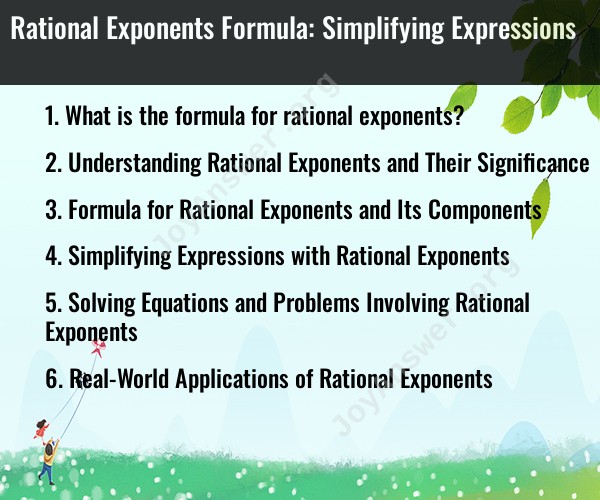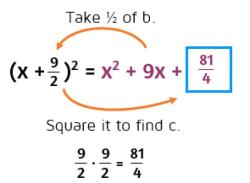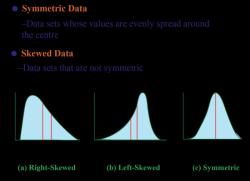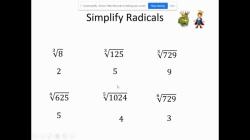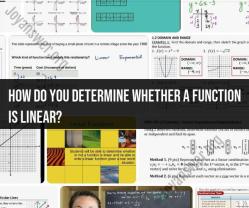What is the formula for rational exponents?
Rational exponents are exponents that are expressed as fractions. The formula for simplifying expressions with rational exponents is based on the following fundamental rules of exponents:
a^(m/n) = (a^(1/n))^m: This rule states that the nth root of a number (a^(1/n)) raised to the power of m is equivalent to a^(m/n). In other words, it allows you to break down a rational exponent into two steps: first, taking the nth root, and then raising the result to the power of m.
(a^(1/n))^m = a^(m/n): This is the reverse of the first rule and shows that you can also raise the nth root of a number to the power of m to get the same result as raising the original number to the rational exponent a^(m/n).
Here's an example to illustrate these rules:
Let's say you have the expression a^(3/2). You can simplify this using the rules as follows:
a^(3/2) = (a^(1/2))^3
In this case, you first take the square root (1/2 power) of 'a' and then cube that result. These rules allow you to work with rational exponents by breaking them down into steps involving radicals and regular exponents.
These rules are essential for simplifying and working with expressions involving rational exponents, making it easier to manipulate and solve mathematical problems involving fractional powers.
Understanding Rational Exponents and Their Significance
Rational exponents are exponents that are expressed as fractions. They are used to represent powers of numbers that are not integers. For example, the expression 2^(1/2) represents the square root of 2. Rational exponents can also be used to represent powers of numbers that are negative or irrational.
Rational exponents are significant because they allow us to express a wide range of mathematical concepts in a concise and elegant way. They are also used in many real-world applications, such as physics, engineering, and finance.
Formula for Rational Exponents and Its Components
The general formula for rational exponents is:
a^(m/n) = (a^(1/n))^m
where a is the base, m is the numerator, and n is the denominator of the rational exponent.
This formula can be used to simplify expressions with rational exponents and to solve equations and problems involving rational exponents.
For example, to simplify the expression 2^(1/2)^3, we can use the formula above to get:
2^(1/2)^3 = (2^(1/2))^3 = 2^(3/2)
Simplifying Expressions with Rational Exponents
To simplify expressions with rational exponents, we can use the following properties of rational exponents:
- a^(m/n) = (a^m)^(1/n)
- a^(m + n) = a^m * a^n
- a^(m - n) = a^m / a^n
- a^(-m) = 1 / a^m
We can use these properties to simplify expressions with rational exponents by combining like terms and rewriting the exponents in a more convenient form.
Solving Equations and Problems Involving Rational Exponents
To solve equations and problems involving rational exponents, we can use the properties of rational exponents listed above. We can also use the following strategies:
- Isolate the rational exponent and raise both sides of the equation to the power of the denominator of the exponent.
- Use the fact that a^(m/n) = (a^(1/n))^m to simplify the equation.
- Use the properties of logarithms to solve the equation.
Real-World Applications of Rational Exponents
Rational exponents are used in a variety of real-world applications, such as:
- Physics: Rational exponents are used to model phenomena such as the inverse square law of gravity and the exponential decay of radioactive isotopes.
- Engineering: Rational exponents are used to design and analyze structures such as bridges and buildings.
- Finance: Rational exponents are used to calculate compound interest and other financial concepts.
Here are some specific examples of real-world applications of rational exponents:
- The intensity of light from a light source decreases inversely with the square of the distance from the source. This is modeled by the inverse square law of light, which can be expressed using rational exponents.
- The amount of radioactive material remaining after a period of time decreases exponentially. This is modeled by the radioactive decay equation, which can be expressed using rational exponents.
- The population of a country grows exponentially. This can be modeled by the population growth equation, which can be expressed using rational exponents.
- The balance of a savings account grows exponentially when compound interest is applied. This can be modeled by the compound interest equation, which can be expressed using rational exponents.
Overall, rational exponents are a powerful tool that can be used to express a wide range of mathematical concepts and to solve a variety of real-world problems.
